Many people say they’re concerned about global warming. But how do we motivate people to act?
Doomsday predictions of flooding coastlines, destructive storms and fires, and devastating species extinctions—repeated over and over in the press—can lead to “apocalypse fatigue.” In the face of these overwhelming messages, even well-intentioned people may start to avoid conversations around seeking solutions.
Per Espen Stoknes, a psychologist and economist recently appointed to the Norwegian Parliament, has studied the ways in which humans react to hearing about catastrophic climate change. His book, What We Think About When We Try Not to Think About Global Warming, is about what we can do differently—how to reframe the debate and turn apocalypse fatigue into personal and societal action.
In his 2017 TEDGlobal talk, Stoknes said, “The biggest obstacle to dealing with climate disruptions lies between your ears.” I spoke with him recently to find out more about what he means by that, and how we can overcome it.
Jill Suttie: Why do you think our biggest obstacle to climate change is our minds?
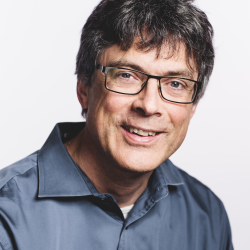 Per Espen Stoknes
Per Espen Stoknes
Per Espen Stoknes: After 30 years of intensive climate science research, we have sufficient knowledge about our climate system and how it interacts with atmospheric emissions. But our knowledge about how people respond to climate science has been lagging behind. Social scientists may have come late to this; but, finally, we seem to have a growing consensus around how to take social science research—from social psychology, sociology, political science, etc.—and put it to use. The shift from looking only at climate science to looking at climate change responses is overdue and hugely important.
JS: What is the best way to talk about climate change if we want to be more successful at engaging people and addressing it?
PES: More than 80 percent of all news and mainstream media play up the issue of doomsday or catastrophe. From psychological research, we know that if you overdo the threat of catastrophe, you make people feel fear or guilt or a combination. But these two emotions are passive. They make people disconnect and avoid the topic rather than engage with it.
There are three main frames that seem to create more engagement and work much better than catastrophe framings or other negative framings.
One framing involves speaking about climate change as a health issue concerning people we care about—our families, our children. We don’t want respiratory disease, so we all want clean air. The second is a safety or insurance framing. It’s about being prepared or ready in case something goes in the wrong direction—a risk management approach, that speaks to business/financial people. They work actively and professionally with risk and understand the need to insure. Finally, we should speak about opportunities for smarter cities, smarter buildings, better food sources, smarter energy systems and transportation systems, and all the opportunities that empowerment from these technologies gives us for better lives.
If we are able to reframe the climate issue this way in our society’s discourse, there is less fear and guilt attached to it—more a sense of “collective efficacy” or the idea that we can do something together as a society. Now, this deep reframing of the issue takes time—it’s different than simply having a slogan or a new news headline. But reframing impacts how people feel about and perceive the issue.
JS: What are the psychological barriers that get in the way of people focusing on global warming and its solutions?
PES: [In addition to framing,] another barrier—and maybe the most important—is the distancing barrier. When we speak about climate, it’s far out into the future, usually in 2050 or beyond. CO2 is invisible, climate issues are happening somewhere else, and somebody else is responsible. I’m sure if climate change were a bad-smelling, brownish haze that some tyrant, lunatic, or crook was releasing into the world, we’d join together and shoot him out of existence.
But climate change is invisible, slow-moving, and doesn’t smell; and if there’s an enemy, it’s us. We feel helpless because it’s so far away. It’s so big; whatever I do wouldn’t impact the issue; it’s outside my scope of influence. So, the more you distance yourself from the topic, the less emotion and engagement.
A third barrier is the dissonance we feel due to our lifestyle, which we built around fossil energy. Our cars, food system, planes, buildings, our entire society rely on fossil fuels. Then, climate researchers come along and say, well, actually we shouldn’t do all these things because it destroys the atmosphere, and you’re complicit in destroying the planet. That creates an inner conflict between what we do and what we know—a dissonance.
Most people react to dissonance with self-justifications—ways to say that we are alright. To feel less dissonance, I might say, for instance, that my neighbor has a bigger car than I do, or it doesn’t matter if I stop eating meat if I’m the only one doing it. I can always compare myself to others and find that they are worse than me. A second strategy is to doubt the climate science altogether. After all, there was global warming during the ice age, but there were no cars or planes then. So, why do we blame cars and planes now?
A fourth barrier is denial. Now, denial is a word that has been overused as a derogative term—only stupid or deluded people who don’t have the right information are “climate deniers.” But therapists discovered long ago that humans were capable of both knowing something and not knowing something at the same time—to have information but live as if they don’t. It’s no surprise that we are prone to denial when it’s hard to change our lifestyle and the science evokes fear or guilt in us.
Finally, there’s identity. In America, particularly, climate science has been linked closely with partisan politics and has become an identity issue. I belong to this political group with particular political values that guide me, and they say that government is the main problem, or that there’s too much regulation threatening my individual freedom or the free market. If climate science comes up, it suggests solutions involving more taxes, more regulations to protect the atmosphere. If this conflicts with my values and my identity, then the science must be wrong.
People will protect their identity against threatening facts. This is reinforced by what we call the confirmation bias. We all tend to search out facts and information and experts that confirm our values, and ignore facts and experts that are contrary to them.
JS: What are the workarounds for these barriers?
PES: We covered reframing already. A second important solution is using the power of social networks. Climate scientists, being scientists, think that most people are rational in their approach to data and learning and just lack information. But, in reality, most people are social before they’re rational.
When I consider an issue, I will typically look at what my peers, my neighbors, and my family believe. What do they make of this issue? Then, I will align myself with what I can see or hear from them. That’s where social norms or social networks become hugely impactful. The ripple effect from person to person doing visible, positive social acts becomes central.
“The biggest obstacle to dealing with climate disruptions lies between your ears”
There’s a famous study that has been replicated many times. Around 4,000 households participated. The first 1,000 households were asked to conserve power or energy because it’s sustainable and the right thing to do for the planet. The second were asked to conserve power for future generations. The third got informed about how much they could save on their utility bill if they cut their power use. The fourth were told how their energy use compares to their neighbors’ use. Of these groups, it’s always the fourth one—powered by social norms and social networks—that comes out on top. We should put these to use. There’s a company called Opower that’s doing that.
You’ll have a much higher impact if people perceive a climate attitude is coming from somebody who’s like them or part of their social group than if it’s coming from outside. If we can change the messenger—away from a climate scientist or a coastal liberal or whatever—to somebody who’s more similar to them, that’d be a great approach to engaging people.
Another solution has a lot to do with nudging. If it takes a lot of effort to figure out which car, foodstuff, or transportation is the most climate-friendly, then people tend to just pick a default option, due to a kind of overload on their attention. So, we could create a green default option, where, if I don’t think much, I still end up picking the most energy-efficient option. That’s a great way to influence some people’s behaviors and so reduce their dissonance.
JS: Do you have an example of how that might work?
PES: Sure. If there’s a buffet, for instance, and the first thing you see is meat, you tend to load up on meat and so have a big carbon impact. If the same buffet is rearranged so that the first thing you come to is salad or veggies, then people will take much less meat. Or you can give people a smaller plate or remove trays from cafeterias. People tend to pick fewer items and generate less trash. Those are just a few examples of how to rearrange our “decision architecture”—the situation in which we make our everyday decisions.
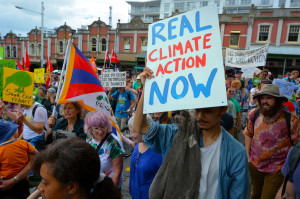 Thousands rally for action on climate change around New Zealand in 2015.
Thousands rally for action on climate change around New Zealand in 2015.
Nudging and social norms can be amplified if they can be combined with better storytelling, too. The story of the apocalypse disengages people. But there are other stories that seem to be more engaging—like the story of smarter, more resource-efficient growth, where we reduce waste while improving our lives. This story fits well with businesspeople.
Another is that what we’re really looking for in life isn’t more stuff, but the good life. The good life includes better relationships, more meaningful jobs, and connecting to nature. That’s the happiness story.
Another story is a shift from dominance over nature to stewardship of God’s creation, which is an ethical story. Some call this the greening of religion, like what the Pope did with his encyclical, where he speaks of taking care of God’s creation. And then the story of “rewilding”—changing the idea of nature as a resource to nature as an ecosystem that we can help and enhance by re-investing in natural capital.
Some people respond more strongly to one story than another. But the more we speak about this, the clearer the vision is of a future society without climate destruction. When people want that kind of future, they align their lives with the story, and the framings, nudges, and social networks start to change accordingly.
JS: So, knowing what you know about people’s resistance, how do you maintain hope yourself?
PES: Good question. There are versions of hope that are passive: Somebody will fix this problem with technology and soon magically remove the CO2 from the air. That hope is dependent upon a kind of magical, technical fix. And there is a more active, optimistic hope: If we just fight hard enough, we’ll turn society around.
I have hope that is not dependent on what happens around me, but is grounded in my inner values. I do this work because it’s aligned with who I am. So, it’s a matter of character and style, rather than waiting for or depending on short-term successes.
Maybe this type of hope is darker, because I have to acknowledge I don’t know how it will end. But, on the other hand, I’m not dependent on knowing how it will play out, because I want to be part of the transition anyway.
It gives me joy to take action today. It brings out a sense of satisfaction in me, because I’m contributing. I’m not passively waiting for a fix or magically expecting my own contributions to solve the problem. I’m part of something larger. And, sensing that connection to a larger call to action, working through and in me, I feel connection—to the air, to society, to a larger transition. It brings me a feeling of flow, participation, groundedness, and sense of purpose that is larger than me.


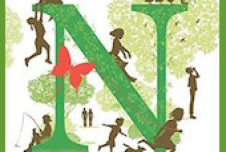
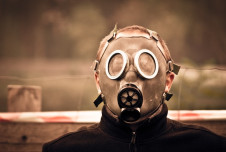

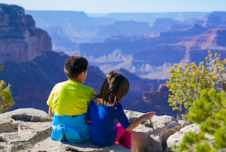

Comments